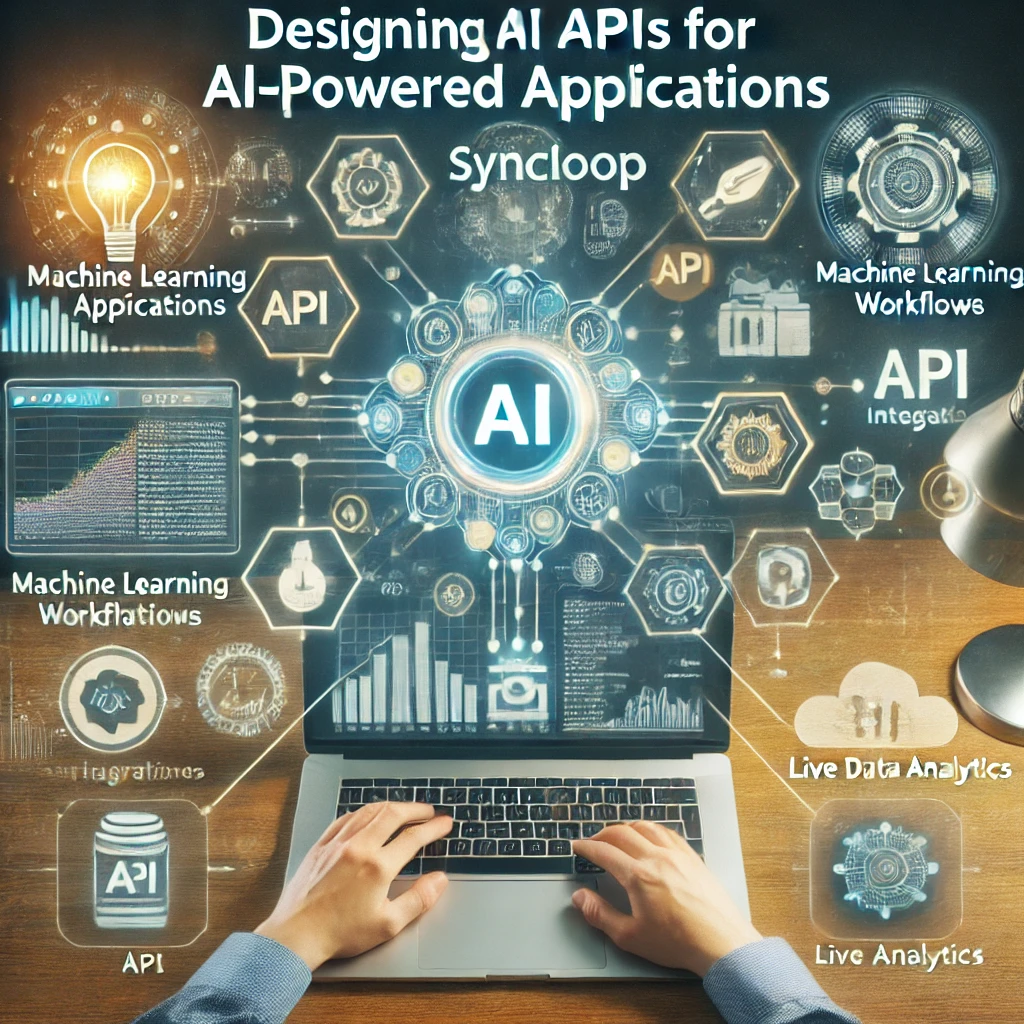Designing APIs for AI-Powered Applications Using Syncloop

Why APIs Are Vital for AI-Powered Applications
APIs enable AI applications to:
- Process Data Seamlessly: Facilitate data flow between AI models and user interfaces.
- Provide Real-Time Predictions: Deliver instant results for dynamic use cases like recommendations or fraud detection.
- Enable Scalability: Support increasing workloads as applications grow.
- Simplify Integration: Connect AI services with other systems and platforms effortlessly.
- Enhance Security: Ensure safe handling of sensitive data used by AI models.
Syncloop provides the tools to streamline these processes and build efficient, scalable APIs for AI applications.
Key Features of Syncloop for AI-Powered APIs
1. Workflow Automation
Streamline data preprocessing, model execution, and response handling with automated workflows.
2. Real-Time Processing
Enable APIs to handle high-frequency requests and provide low-latency responses.
3. Data Transformation
Normalize and enrich input data for AI models to ensure accurate predictions.
4. Scalable Infrastructure
Handle large volumes of API requests and data processing needs.
5. Secure Communication
Protect sensitive data with encryption and role-based access controls.
6. Integration with AI Models
Connect APIs to machine learning frameworks and AI platforms seamlessly.
Steps to Design AI-Powered APIs with Syncloop
Step 1: Define Application Requirements
- Identify the key AI functionalities, such as:
- Image recognition.
- Natural language processing (NLP).
- Predictive analytics.
- Document the required data flows, model inputs, and expected outputs.
Step 2: Create API Endpoints
- Design endpoints for key functionalities, such as:
- /predict for model predictions.
- /train for model training or fine-tuning.
- /data/upload for feeding datasets.
- Ensure endpoints support standard formats like JSON or XML.
Step 3: Automate Workflows
- Use Syncloop’s workflow automation tools to:
- Automate data collection and preprocessing.
- Trigger AI model execution dynamically.
- Deliver results to end-users or connected systems.
- Incorporate Transformers for data validation and enrichment.
Step 4: Implement Real-Time Processing
- Configure real-time workflows to:
- Process high-frequency API requests efficiently.
- Enable instant responses for user-facing features like chatbots or recommendations.
- Use Syncloop’s event-driven architecture to handle dynamic interactions.
Step 5: Integrate Machine Learning Models
- Connect APIs to AI platforms or frameworks like TensorFlow, PyTorch, or Hugging Face.
- Automate:
- Data preprocessing for model compatibility.
- Delivery of model outputs to applications or dashboards.
Step 6: Secure and Monitor APIs
- Use Syncloop’s security features to:
- Encrypt data during transmission and storage.
- Restrict sensitive operations to authorized users with role-based access.
- Monitor API performance and usage metrics to ensure reliability and scalability.
Real-World Applications
1. Chatbots and Virtual Assistants
- Use Case: Enable conversational interfaces powered by NLP models.
- Features Used: Real-time processing, workflow automation, secure APIs.
2. Recommendation Systems
- Use Case: Deliver personalized content or product suggestions in real time.
- Features Used: Data transformation, real-time processing, scalable infrastructure.
3. Predictive Maintenance
- Use Case: Predict equipment failures using sensor data and machine learning models.
- Features Used: Workflow automation, event-driven architecture, API monitoring.
4. Fraud Detection
- Use Case: Analyze transactions to detect and prevent fraudulent activities.
- Features Used: Dynamic workflows, integration with analytics models, secure communication.
Best Practices for AI-Powered APIs
- Optimize Data Workflows: Use Syncloop’s Transformers to preprocess data for better model accuracy.
- Focus on Performance: Implement real-time workflows to reduce latency and improve responsiveness.
- Secure Data and Models: Protect sensitive data and AI models with robust encryption and access controls.
- Monitor Continuously: Use real-time metrics to optimize API performance and reliability.
- Iterate with Feedback: Refine APIs and workflows based on user feedback and usage patterns.
Why Choose Syncloop for AI-Powered APIs?
Syncloop offers a powerful platform for building and managing APIs that integrate seamlessly with AI technologies. Its features for automation, real-time processing, and secure communication make it an ideal choice for deploying intelligent applications.
Conclusion
Designing APIs for AI-powered applications requires a blend of robust architecture, efficient workflows, and secure integrations. Syncloop simplifies these complexities, enabling developers to create APIs that support dynamic and scalable AI solutions. By leveraging Syncloop, organizations can accelerate innovation and deliver smarter, data-driven applications.
Back to Blogs